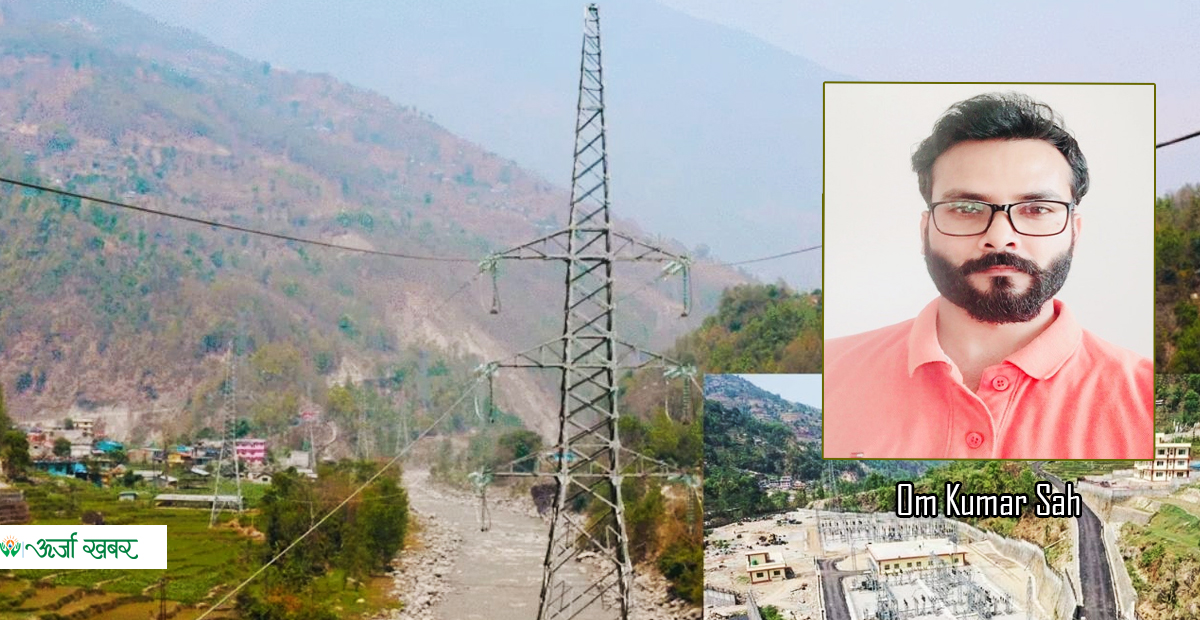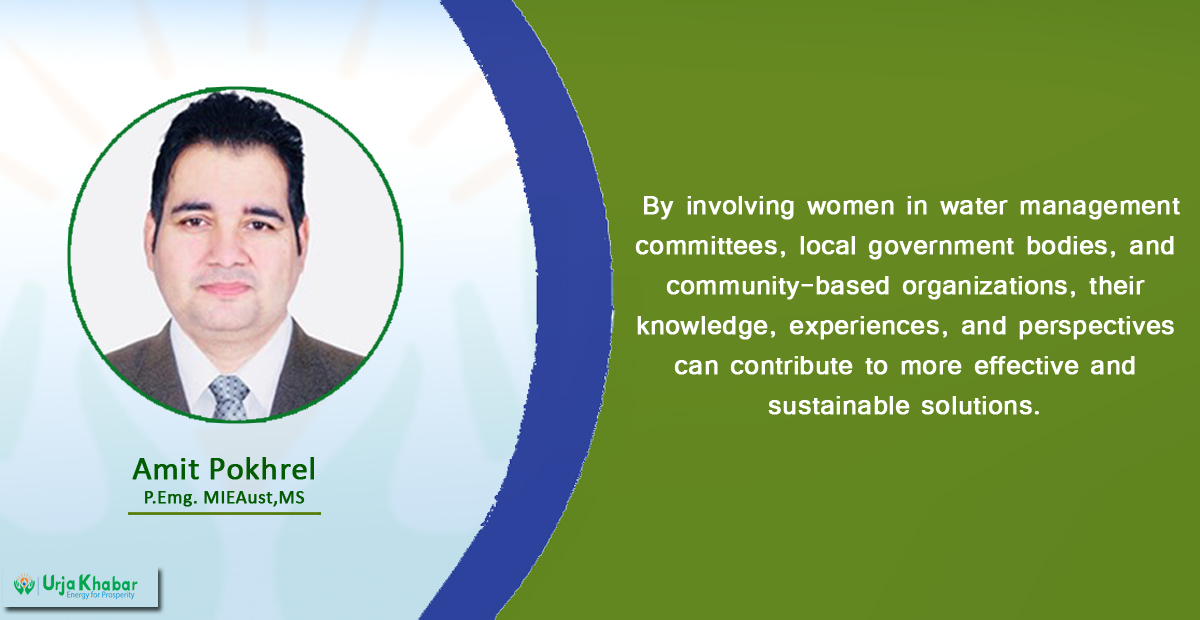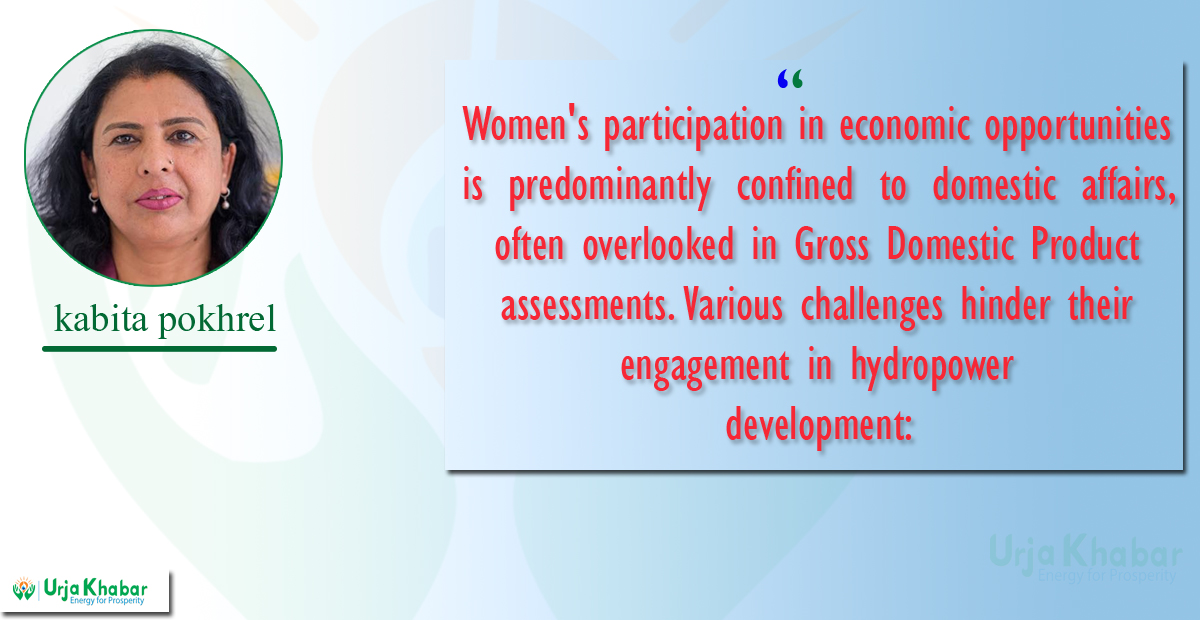Energy Update
Realigning the political economy of Nepal’s energy sector

Kathmandu: In May 1911, a small micro-hydro lit up a bulb located 17 kilometres away in the centre of Kathmandu. It was Nepal’s first hydro power plant and only the second in all of Asia. Local police at the time were instructed to chase away people flying kites near the transmission lines because the then Prime Minister, Chandra Shumsher Rana, the only meaningful beneficiary of that micro hydro, had been told that kite strings could cut the wires. In the century since then, our understanding of kite strings and transmission lines has improved, but we have squandered our lead position in hydro-power development in Asia.
In the early 1990s long before electric vehicles were sexy, Kathmandu captured the world’s attention with its initiative on electric vehicle. Safa Tempos, or electric three wheelers, “constituted the largest fleet of battery-powered public transport vehicles in the world,” and had turned “one of the world’s poorest cities into a pioneer for an extraordinary new idea in public transit,” Bloomberg reported. But only briefly, the report laments. “What happened?” it asks, in a despair that is only too familiar in Nepal with failed expectations and good ideas gone awry.

By 1960, Nepal was one of the countries leading the world on distributed energy, building localized mini grids with electricity produced from micro-hydro. Some 3,300 community-owned and community-operated micro-hydro mini-grid would go on to be built. Researchers, such as those at the University of Bristol, pointed to Nepal’s Rural Energy Development Programme as one of the successful initiatives in the Asia Pacific region. Today, as the national grid has expanded, these early innovators on distributed energy have been relegated as useless relics. At least Chandra’s Shumsher’s micro-hydro plant has been converted into a museum. More recent ones are simply lying in a state of disrepair - tattered and forgotten.
What happened? How did Nepal’s early innovations on energy fail to transform into a sustained movement that would allow all Nepalis to benefit from it.

Nepal’s energy sector today is vastly improved than it was just a few years ago. It is more profitable, supply-demand balance has improved, and approximately 90% of the people now have access to the grid. But energy remains one of Nepal’s core development challenges. Traditional biomass still accounts for approximately two-thirds of Nepal’s total energy use. Energy imports represents approximately 17% of total imports, which is proving to be a huge drain on foreign exchange and a continuous source for supply risks. Energy supply in rural areas is poor and unreliable. Investments into the sector still requires the generosity of foreign countries to be realized.
So, what happened? Why did Nepal squander the opportunities it created to transform the country with the energy sector?
‘It’s the political economy, stupid’; to borrow from and embellish from the famous phrase “It’s the economy, stupid,” coined by James Carville, a strategist of US President Bill Clinton, which became a rallying cry of Bill Clinton’s campaign that helped defeat a popular incumbent in the 1992 election.
The current times offer a uniquely interesting moment to draw from the circle of history and begin a conversation on the political economy of Nepal’s energy sector.
Some 26 years ago, on 4 February 1996, Baburam Bhattarai and Pampha Bhusal arrived at the gates of Singha Durbar to submit the 40-point demands of the Maoist Party to the then Prime Minister, Sher Bahadur Deuba. Their demands included, among other things, establishing Nepal as a federal republic, abolition of monarchy, and a secular state, accompanied by a threat to start an armed uprising within two weeks if their demands were not met.
Less than two weeks later, the Maoists would follow through with their threat, attacking the police post at Holeri in Rolpa, and, thus, launching the armed Maoist uprising. Over the next two decades Nepal would plunge into one of its darkest periods in history and emerge at the other end of that civil conflict a changed country.
When Bhattari and Bhusal arrived at Singha Durbar in 1996 to convey the 40 points demand of the Maoists, they were initially denied entry. In protest, Bhusal sprawled out on the road just outside the Singha Durbar gate, blocking traffic. In the few minutes of commotion that followed, a minister’s convoy was held up.
The minister whose convey was held up happened to recognize Bhattarai. He called the Prime Minister’s office and the two were finally allowed in. They met Prime Minister Deuba very briefly. He was preoccupied, and busy preparing for a state visit to India. He left for India later that week without much of a thought for Bhattarai, Bhusal or the 40 points demand.
Bhusal, though relatively unknown in 1996 when she caused the traffic jam at Singha Durbar in 1996, would emerge as fierce Maoist commander during the conflict, thus cementing her place in the Maoist leadership. Today, she is the energy minister, though she lost the recent elections. She is expected to remain in office until the new government is formed and a new minister takes over.
Almost exactly 25 years later from the day when Bhusal was initially barred entry into Singha Durbar, she would set out again to meet the same Prime Minister, Deuba. Only this time, she would drive to the Prime Minister’s residence in her official Minster’s car, receive a much warmer reception no doubt and demand that the Government remove Hitendra Dev Shakya from the post of Managing Director of Nepal Electricity Authority (NEA).
This time Prime Minister Deuba would readily agree to her demands. Within a few months, Shakya was removed from the Managing Director’s position at NEA and Kulman Ghising, the man widely credited with having ended loadshedding in Nepal, would be reappointed to the position of Managing Director at NEA.
This is the kind of historical moment where you must pause to ask, what would have happened if Deuba had agreed, or at least more carefully considered, the demands that Bhusal and Bhattarai presented in 1996? Most elements of the Maoists 40 points demand – the federal republic, abolition of monarchy, secular state - were realized anyway. Would we be exactly where we are today, just without having lost 20,000 lives, without thousands being displaced, and without losing two decades in a brutal civil war.
So much of history turns in an instant, and the ability to make the right decisions about the future in that instant.
Through its history, the political economy of Nepal’s energy sector has squandered the opportunities created from many of its early initiatives. Like the political history of Nepal, much of it has turned on decisions that have been proven wrong, because they were based on premises that were incorrect or preoccupations that were elsewhere.
In this article, I reflect on one aspect of the political economy of Nepal’s energy sector. I explore how Nepal’s hydro power potential has so consumed and intoxicated Nepal that the relentless desire to build hydro power plants has paralyzed broader development. I call for independent civil society to organize, challenge this paradigm and shape a new narrative that extends the benefits of Nepal’s energy sector to all Nepalis.
Reliable electricity is critical to Nepal’s development and economic growth. An endless desire to simply keep building hydro power plants isn’t.
Nepalis have benefitted immensely from improved electricity and energy supplies (like coal, oil, and gas). Today, 90 percent of nepali people has access to electricity, thanks to the accelerated efforts for rural electrification of the last few years. While improved electricity supply and access is benefitting everyone, it is not clear that the benefits from the process of building new hydro plants are enjoyed by all.
A study conducted by the National Bureau of Asian Research, based on a survey of 19 hydro plants, found that projects contributed on average to 20 kms of new roads, employed between a hundred and thousand people on average, and supported development of local infrastructure such as schools, health facilities and other social services. There is no doubt that hydro power plants can add to economic activity and infrastructure improvements locally in the area where they are located. But for Nepal that has not always meant that hydro plants provide development benefits that is additional (or in addition) to what would have been done anyway.
Ensuring that people benefit from hydro power plant development is a policy goal. In 2000, for instance, a policy for royalty sharing between the central, district and local governments was put in place. It has since been revised in line with the federal structure. Provinces and local governments now share 50% of the royalty, while the federal government retains the other half. Though well intended, attempts to share the benefits hasn’t been extremely successful. Those efforts could be “compounding inequality in the country instead of tackling it,” a research report by the International Water Management Institute (IWMI) concluded.
Efforts to explore better options for sharing in the benefits from hydro power development continue to be explored. Between 2015 and 2017, for example, Niti Foundation, Social Science Baha, and the International Centre for Integrated Mountain Development (ICIMOD) conducted several studies and workshops to examine possible improvements to the model for sharing the benefits of hydropower projects with local communities in a fair and equitable manner.
Nepal’s quest to find fair and equitable methods to distribute the benefits of hydro power development will no doubt continue. But Nepal’s energy strategy, however, contains another confusion that has confounded and misdirected its direction.
Our energy strategy confuses the benefits that come from access to reliable electricity with the benefits that come from hydropower development. Those are not the same. Several studies, including those commissioned by leading development partners, exploring the benefits from hydropower development invariably end up estimating the benefits from access to reliable electricity supply. That confusion, and the resulting misdirection, has undermined Nepal’s political, social, and economic development.
Reliable, affordable, and now equally important, clean electricity supply is critical to Nepal’s growth and development. This simple truth has been translated to provide the thrust for the idea that Nepal must develop the 80,000 MW of hydro power potential it possesses. This potential has intoxicated Nepal, its politics and approach to development.
Progress in the energy sector is now measured by the number of MW that were built. One government sets a goal for 5,000 MW, another 10,000 MW, and so on. Every day there is angst that we are not developing more MWs. Every investment forum concludes with billions of dollars of investments committed to new hydro plants. And all the while, all that Nepal has needed for economic growth and development is access to reliable electricity supply.
Its large hydro power potential has intoxicated Nepal into chasing one singular idea with devastating impacts on everything else around.
Nepal is rich in water resources, before it is rich in hydro power potential. Yet Nepal’s ability to exploit the benefits of water resources, other than for hydro power, has been limited and marginalized. Government’s Irrigation Master Plan 2019, for instance, recognizes that only 40% of agricultural area is cultivated. This even when the plan notes that Nepal has “considerable potential for improvement and expansion” with “ample water resources” and with tremendous potential to increase the income of 70% of Nepalis employed in agriculture.
The situation with drinking water is even worse. Under the 2020 Voluntary National Review of the Sustainable Development Goals (SDG), Nepal reported that it still faced “challenges in providing safe drinking water, as only 25% of the population currently has access to safe sources.”
Nepal must do a better job of balancing how it uses it water resources, for example, by extending access to safe drinking water and irrigation, instead of focusing singularly on building hydro power plants.
Nepal has been plagued by inadequate investments in distribution infrastructure. The rush to tap Nepal’s large hydro power potential has meant that investments have largely chased generation projects. Data on the spread of investment across generation, transmission and distribution isn’t readily available. As a proxy, consider investments by development partners in the power sector. The Asian Development Bank (ADB), for example, didn’t make its first investment in the distribution segment until 2018 when it approved the transmission and distribution energy efficiency enhancement project. Among the multilateral development partner, ADB has been the largest investment in the power sector.
The absence of investments in distribution infrastructure has damaged Nepal’s competitiveness and economic prospect. This has been felt perhaps most acutely in agriculture, where poor distribution networks have kept electricity supply unreliable. The lack of reliable and quality power in agricultural feeder lines has, over the years, locked agriculture into continued use of traditional methods. Farmers don’t invest in electric pump sets, agricultural mills, or cold storages if there isn’t enough reliable and quality power to run that equipment. Agricultural productivity has, thus, fallen sharply. The net result, Nepal’s food imports have increased sharply, approximately 78 times, between 2001 and now to approximately $ 1 billion annually and represents a new source of vulnerability for the country.
Even today, Nepal remains so singularly intent on tapping the large hydro power potential that investment continue to primarily target generation and large transmission project. There isn’t adequate investment in distribution infrastructure, particularly in agricultural areas which is the primary source of livelihood for 70% of the country’s population. Modernization of the agricultural feeder distribution networks that improves the quality and reliability of electricity supply would significantly improve agricultural livelihoods, enhance incomes, reduce food imports, and benefit most Nepalis.
Nepal’s power sector plans and investments feels somewhat like from the colonial era. Large cotton and sugar mills were developed inland, and train networks ferried them to the port for export to other parts of the world. Did colonial powers invest in industries and transport network in their colonies? Yes. Did those investments benefit the people of the colonies? No.
Is Nepal making investment in large hydro power plants and transmission network? Yes. Will those investments be benefitting the people or the broader development of Nepal? No.
Nepal is vexed by the lack of electricity demand domestically. Nepal’s energy sector is distressed by the idea that there just isn’t enough demand domestically to absorb all the generation. Many more power plants are due to be built. Where will all this electricity go? The stress is beginning to show, that too not just in the energy sector. The topic has now become of paramount national importance.
All sorts of response plans are in play. Sell electricity to India. Increase electric vehicles. Switch to electric cooking. Accordingly, new high voltage transmission lines are now interconnecting India and Nepal. Generous tax waivers on electric vehicles are benefiting those that can afford to buy a car (i.e., the rich). Thousand of induction cookstoves are due to be distributed under a generous foreign grant. Whether this will lead to a surge in electricity demand remains to be seen.
But in agricultural and rural areas, where over two third of all Nepali live, work and derive their income, the plans to increase electricity demand makes no difference. There isn’t any meaningful investment to modernize their power distribution network or improve the quality and reliability of the power they are supplied. As it has been for several decades, the urgency with which Nepal seems intent on tapping its fabled hydropower potential this time will also simply bypass most Nepalis without benefitting them in any meaningful way.
For those daring to look: the issue of low electricity demand that has vexed Nepal offers a powerful paradox: it serves as the final proof for how little Nepal’s power sector truly benefits the people or the economy of Nepal. Surely, if the abundance of electricity supply and bountiful hydro power generation has not yet translated into a growing economy – or increased our per-capital electricity consumption significantly – clearly something must be off.
Maybe, perhaps just a maybe, that development of hydro power generation alone, by itself, doesn’t benefit the people or uplift the economy.
Maybe, perhaps just a maybe, that developments in the power sector must be redesigned with investments across many segments so that it directly benefits people more broadly, instead of a narrow few.
Maybe, perhaps just a maybe, that Nepal must stop getting intoxicated by its large hydro power potential and explore development and growth options that truly benefit all Nepalis.
Independent civil society, removed from industry or other vested interested, must step in to explore these hypotheses. Existing narratives must be challenged. Nepal doesn’t have a history or culture of civil society that is organized enough to tackle large policy or strategic issues. Without funding or resources, there isn’t much that can be done. But across the sector (in Government, industry, finance, development partners, consulting services, academia, media, and politics) there are well intentioned and insightful individuals. We must find a way to weave them together and enable civil society to organize and pursue these subjects with intent.
There is every chance that the hypotheses presented in this paper are incorrect. They remain untested thus far. Let’s also presume that decision makers, both politicians and policy makers alike, are also well intentioned. But so much of history turns in an instant, and the ability to make the right decisions about the future in that instant. For that, someone must know the right decision to take in the first place.
The future of Nepal needs its Nepalis to step up and answer.
The Writer is an energy specialist, This article taken from Urja Khabar bi-annual Journal published in 2022 Dec. 16th
Conversation
- Info. Dept. Reg. No. : 254/073/74
- Telephone : +977-1-5321303
- Email : [email protected]














